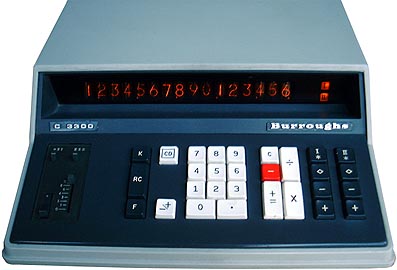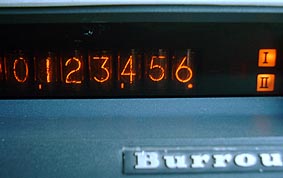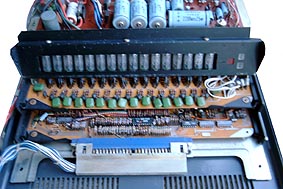
The Burroughs C3300 was an early desktop calculator released in 1970. Manufactured in Japan by Sharp Corporation for Burroughs Corporation in the United States, the C3300 featured advanced engineering and build quality for its time.
The C3300 had a large footprint, measuring approximately 12.5 inches wide, 16.5 inches deep, and 4.5 inches tall. It weighed over 3 pounds, not including the power cable. Power was supplied through a fixed cable connected to a 240V AC outlet.
The most striking feature of the C3300 was its 16 digit nixie tube display. Nixie tubes are glass tubes filled with neon gas that light up to form digits when electrical current passes through them. In addition to the numeric display, the C3300 had indicator lights for the two memory registers, an error indicator, and a negative number indicator.

Despite its bulk, the C3300 had a simple set of keys laid out to the right side for one-handed operation. It performed the four standard arithmetic functions and allowed features like constant calculation, memory storage and recall, and decimal point selection. The keys were said to have a satisfying, chunky feel when pressed.
Internally, the C3300 was crammed with components even by the standards of the time. Discrete transistors and diodes were used extensively to implement the logic circuits. Most of the integrated circuits were manufactured by Japanese companies like NEC. The power supply featured gigantic power transistors attached to large heatsinks.

While primitive by modern standards, the calculation capabilities of the C3300 were impressive for 1970. It could handle 16 digit precision for both positive and negative numbers. An external accessory was even available to allow pre-programmed keystroke sequences for repetitive calculations.
The Burroughs C3300 pioneered features like nixie tube displays and one-handed operation. Its premium engineering was reflective of its high cost when new. Today, the C3300 remains a milestone product in the history of calculators and computing technology.